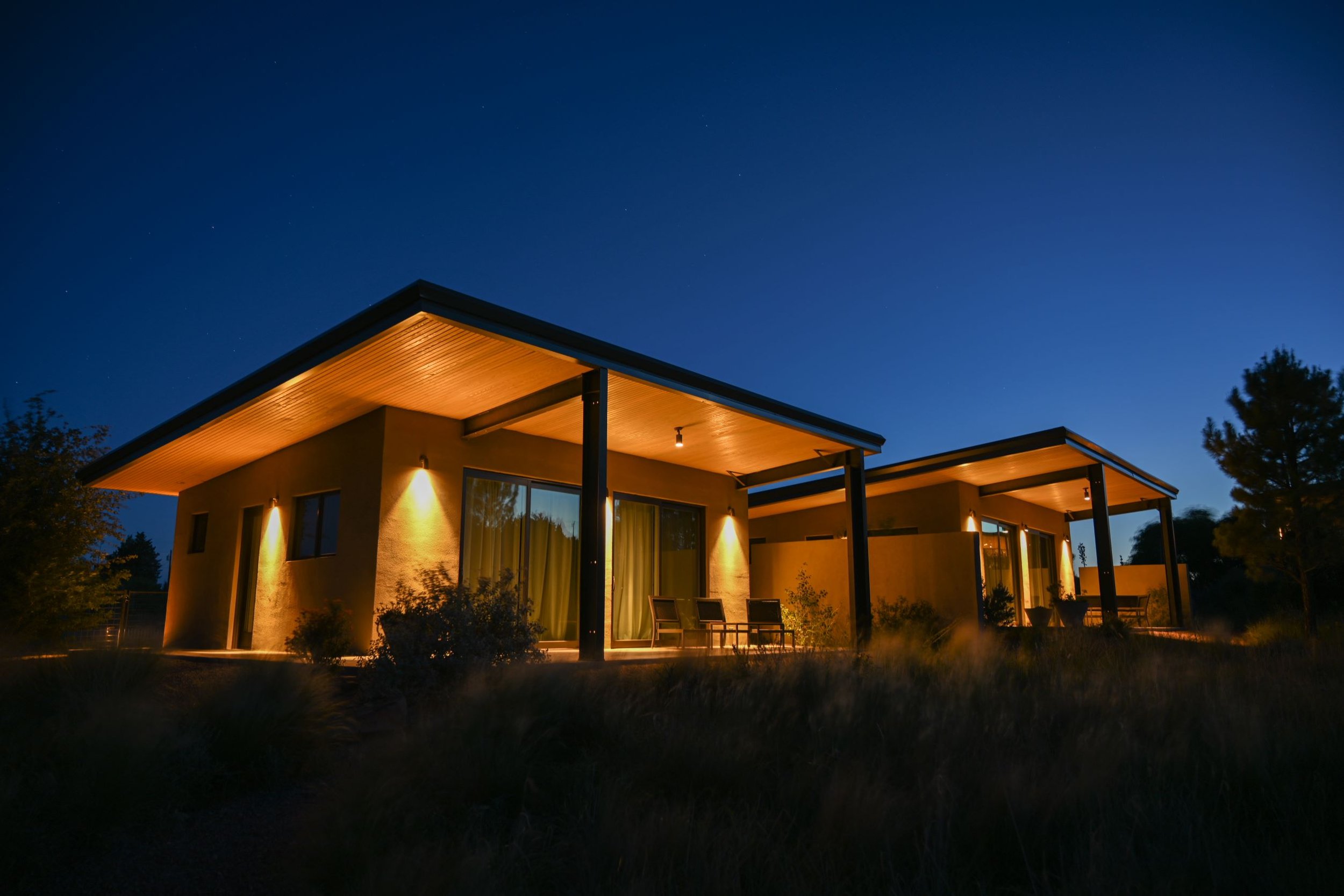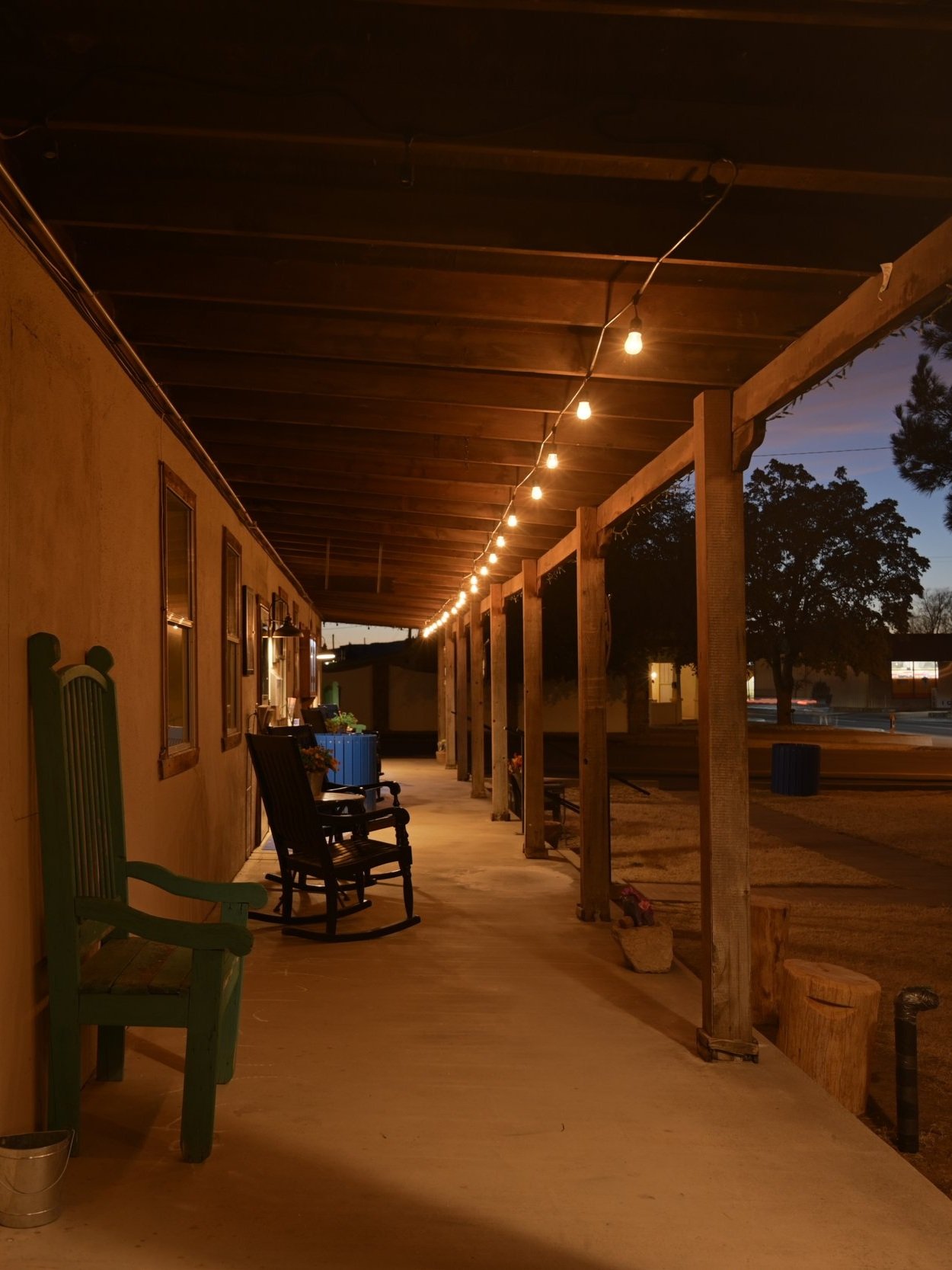
Simple Tricks to Be More Night-Sky Friendly
These quick fixes can reduce light pollution at your home or business without breaking the bank.
Shielding String Lights
String lights, also known as bistro or cafe lights, are increasingly popular as supplemental lighting for cozy outdoor spaces. While they may be pretty, all of those unshielded bulbs can cause a lot of light pollution. Even though the bulbs are dim individually, together they can be brighter than the majority of residential lighting options.
A simple trick to keep the cozy atmosphere without spoiling the night sky is to mount the string lights under a canopy or other existing structure. The lights should be mounted at least a foot away from the edge, and recessed high enough up that their light is not going directly into the sky.
If an architectural solution isn’t available, consider a model of string light that offers built-in shields to preserve the night sky.
The PARty Trick
One of the most common forms of outdoor flood lighting uses a “PAR 38” light. PAR stands for Parabolic Aluminized Reflector, and the number refers to the diameter. These ubiquitous fixtures are often the source of many neighbor complaints about light trespass and glare, as they often are poorly aimed.
Aiming a PAR-38 style light straight down instead of at an angle can dramatically reduce the light pollution and trespass it produces. Because the reflector housing focuses the light, very little is wasted going upwards. If you still need to angle the light up to illuminate the target, consider a shield such as the Parshield that simply clips onto the bulb to eliminate light going upwards. Properly aimed, the shield allows the light to be cast a considerable distance without intruding on neighbors or going directly into the sky. Using a 2700K PAR38 bulb rather than a bright-white 5000K bulb can further reduce glare and light pollution.
The smaller PAR16 and PAR20 bulbs can also be used as a miniature shielded fixture when aimed down, and are small enough to fit into most common light fixtures such as jelly jars, carriage lights, or barn lights to convert them into night-sky friendly fixtures.
DIY Amber Lighting
Amber colored (2200K or below) lighting options have less environmental and health impacts than bright white or blue options, but finding them in stores can sometimes be difficult. This is especially true for solar-powered lights, which are rarely offered in anything other than daylight-white and have integrated LEDs that can’t be changed.
Instead of paying lots of money for specialty-order amber products, you could apply an amber-colored filter over the light fixture or housing. This works best for light fixtures that have flat surfaces to apply the filter against, but with some patience curved fixtures can work as well.
In the film and theater industry, lighting professionals use “gel” filters in front of lights to produce desired colors. Although called “gels”, this is misleading: they are really a thin plastic sheet. They can be cut to whatever size desired, but are not sticky so tape will be needed to affix it to the light. “Gel” filter products such as Lee Filters #287 or Roscolux #20 can turn bright white into an amber 2200K color, and can both be found for less than $15 for a 21” x 24” sheet. A variety of other filters are available depending on the desired change in color and intensity. Amber-colored automotive taillight repair tape can also work in a pinch, just don’t apply the tape directly to a warm bulb as the glue may melt.
The above filters will dim the lights down by absorbing the blue light, which isn’t as energy efficient as a light that produces amber to begin with. Typically about 20-50% of the light is absorbed by the filter; the less blue colored a light source is, the less will be absorbed and the more efficient it will be. However, if the alternative is throwing out a fixture for something new, using a filter is likely the better option for the environment and your wallet.
Make Anything Motion Controlled
Putting a light on a motion sensor can improve security and reduce energy waste, as well as help protect the night sky. However, most lights do not offer motion sensors and many of the products that do are poorly shielded, overly intense, or don’t have the proper color to be considered night-sky friendly.
However, any light can be made motion-activated if you know how to do some simple wiring. Motion sensors can be bought individually and wired into an existing light or in a junction box, allowing you to select any night-sky friendly fixture. Another benefit of this method is that you can more strategically place the motion sensor where it is most needed instead of having it on the light fixture itself. You could even wire multiple lights to be triggered by the same sensor.
Wiring a motion sensor to a light is no more difficult than wiring an ordinary light switch. A motion sensor device will have a spot for three wires: a space for a hot wire, which carries the power from your house; a second hot wire space to connect from the motion detect to the light, and a neutral wire to connect to your house. If hard-wiring isn’t an option, there are also light bulbs with built-in motion detectors which may work, depending on where the bulb is mounted. Some smart bulbs also have motion sensor or timer abilities.








